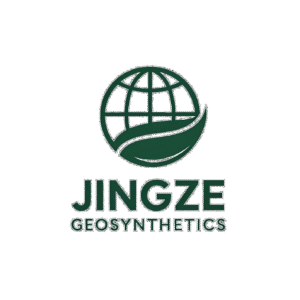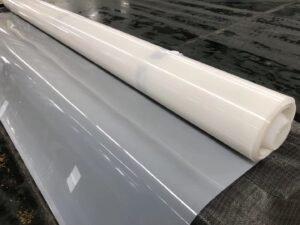

Dezhou Jingze Geosynthetics offers premium Low-Density Polyethylene (LDPE) geomembranes, designed for effective waterproofing and environmental protection. Known for their flexibility, chemical resistance, and durability, LDPE liners are ideal for ponds, reservoirs, landfills, and industrial containment projects

Low-Density Polyethylene (LDPE) geomembrane serves as a versatile and flexible waterproof barrier in a wide array of construction, environmental, and agricultural applications. It offers a unique balance of properties—combining pliability, chemical resistance, and tensile strength—making it an essential material for modern containment systems. Dezhou Jingze Geosynthetics Co., Ltd. manufactures LDPE geomembranes from virgin resin, ensuring purity and consistent performance. By understanding the characteristics and advantages of LDPE liners, project engineers and environmental specialists can select the most suitable containment solution for their needs.
LDPE geomembranes derive their properties from the molecular structure of low-density polyethylene, characterized by branched polymer chains. During manufacture, high-quality LDPE resin undergoes extrusion or calendering to form uniform sheets. Advanced production facilities at Dezhou Jingze utilize strict temperature controls to optimize molecular orientation, improving flexibility and elongation. Quality control includes thickness measurement, tensile testing, and permeability assessments to ensure each roll meets international standards.
LDPE geomembranes exhibit key physical and mechanical attributes that distinguish them from other liners:
One of LDPE’s most prized features is its resistance to a wide spectrum of chemicals. LDPE geomembranes resist:
Comprehensive immersion tests confirm that LDPE geomembranes maintain tensile strength and elongation properties after prolonged chemical exposure, ensuring long-term reliability in harsh environments.
Exposure to solar radiation can degrade many polymer liners, but LDPE geomembranes incorporate UV stabilizers that protect molecular chains from photodegradation. When tested under ASTM G154 accelerated weathering protocols, HDPE geomembranes show minimal loss of mechanical properties after 2000 hours of UV exposure. They also withstand:
These characteristics allow LDPE geomembranes to perform reliably in both exposed covers and buried installations across diverse climates.
Proper installation is critical to achieving long-term performance. Key steps include:
Following guidelines from the Geosynthetic Institute ensures proper installation and certification of LDPE containment systems.
LDPE geomembranes retain water in irrigation ponds, reservoirs, and decorative lakes. Their flexibility enables installation on uneven terrain, while low permeability conserves water and reduces leakage.
Municipal and industrial landfills use LDPE as secondary liners or daily covers. LDPE’s chemical resistance prevents leachate infiltration, while its pliability accommodates waste settlement.
Fish and shrimp farms rely on LDPE liners to maintain water quality. LDPE prevents nutrient and chemical seepage, reducing environmental impact and supporting sustainable aquaculture.
Chemical storage areas, evaporation ponds, and processing basins benefit from LDPE’s resistance to acids, solvents, and hydrocarbons. The geomembrane provides a cost-effective barrier for hazardous liquid containment.
LDPE sheets serve as waterproofing under slabs, foundations, and tunnels to block groundwater intrusion. The material’s ease of welding allows for seamless installations in complex structural layouts.
Heap leach pads and tailings ponds use LDPE liners in low-load zones or as protective covers. LDPE resists leachate chemicals and prevents seepage, safeguarding groundwater.
| Property | Value |
|---|---|
| Material | Virgin LDPE Resin |
| Thickness Range | 0.3 mm – 2.0 mm |
| Tensile Strength | ≥ 16 MPa |
| Elongation at Break | ≥ 500% |
| Puncture Resistance | ≥ 300 N |
| Water Permeability | < 1.0 × 10⁻¹³ cm/s |
| UV Resistance | Superior with stabilizers |
| Roll Width | Up to 8 meters |
| Roll Length | Customizable |
| Standard Color | Black (other colors on demand) |
Our LDPE geomembranes adhere to global quality standards, including:
These certifications ensure Dezhou Jingze LDPE geomembranes meet rigorous performance and safety criteria.
Dezhou Jingze Geosynthetics Co., Ltd. stands out for:
Learn more on our About Us page and discover our full range of geosynthetic products.
Ready to specify LDPE geomembranes for your next project? Reach out to our sales team for quotes, technical data, and sample requests:
📧 Email: [Insert email address]
📞 Phone: [Insert phone number]
🌐 Website: https://www.jingzegeo.com
Dezhou Jingze Geosynthetics Co., Ltd.
Innovative geosynthetic solutions for a sustainable future.

No. 611, North End of Yingbin Street, Lingcheng District, Dezhou City, Shandong Province, China
EMAIL:jingzegeo@163.com
phone;+8618653417978
+8615335342778